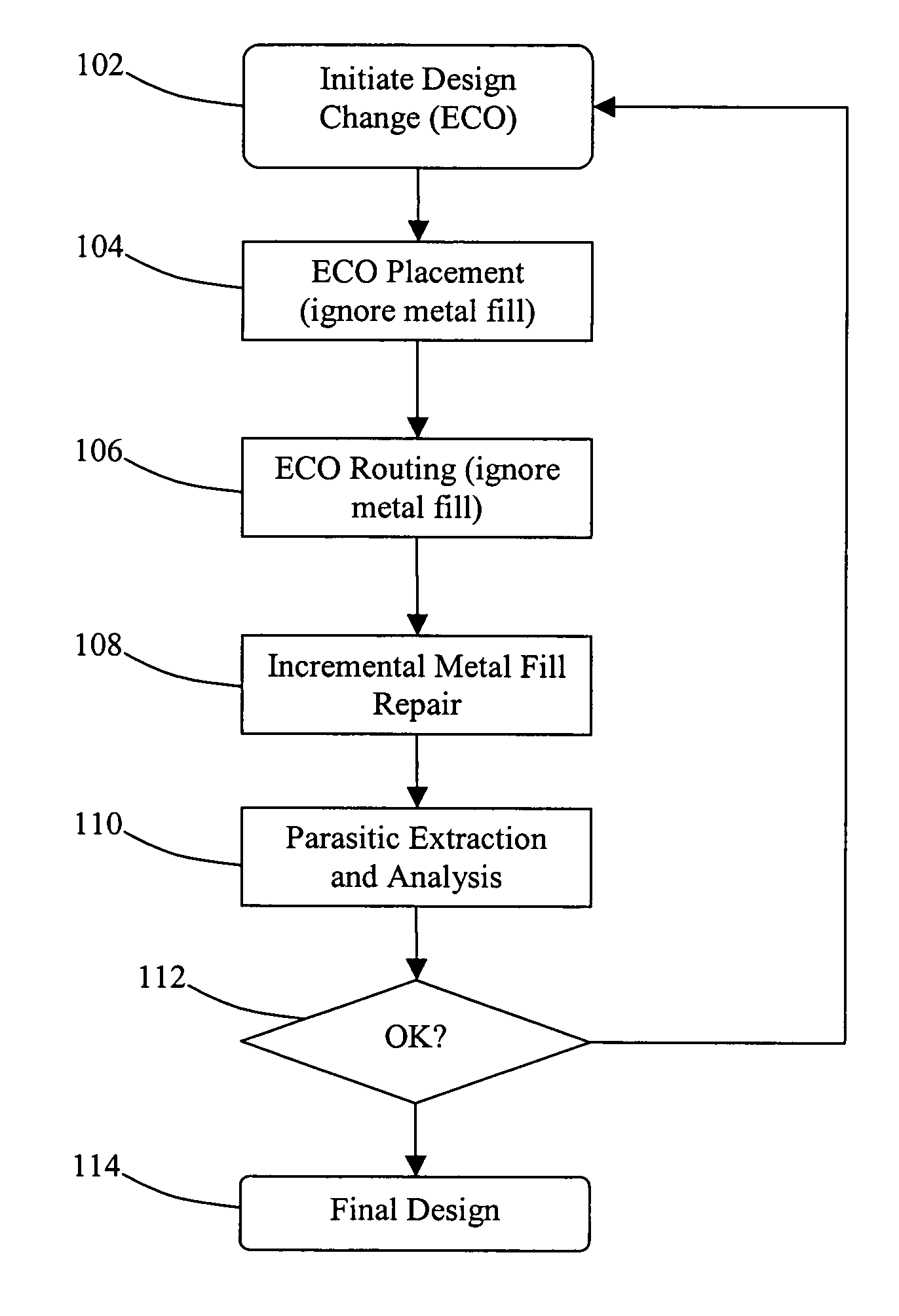Method and system for implementing metal fill
a metal filling and metal technology, applied in the field of integrated circuit design and manufacture, can solve the problems of affecting the production process of cmp, affecting the performance of cmp, etc., and achieves the effect of reducing local step height, reducing yield and impact circuit performance, and reducing layout pattern dependent dielectric thickness variation
- Summary
- Abstract
- Description
- Claims
- Application Information
AI Technical Summary
Benefits of technology
Problems solved by technology
Method used
Image
Examples
Embodiment Construction
[0020]Disclosed is an improved method and system for implementing metal fill for an integrated circuit design. In some embodiments, when an engineering change order is implemented, the existing dummy metal fill geometries are initially ignored when modifying the layout, even if this results in shorts and / or other DRC violations. Once the ECO changes have been implemented, those violations caused by interaction between the changes and the metal fill are repaired afterwards.
[0021]FIG. 1 is a high-level flow of a process to implement metal fill according to some embodiments of the invention. The disclosed process involves modifying the standard behavior of one or more electronic design automation (EDA) tools in the ECO flow.
[0022]At 102, the ECO change process is initiated, e.g., to update ECO connectivity. Any suitable or conventional approach can be taken to initiate the ECO process. As noted above, the ECO changes may be desired or initiated, for example, to correct an existing prob...
PUM
 Login to View More
Login to View More Abstract
Description
Claims
Application Information
 Login to View More
Login to View More - R&D
- Intellectual Property
- Life Sciences
- Materials
- Tech Scout
- Unparalleled Data Quality
- Higher Quality Content
- 60% Fewer Hallucinations
Browse by: Latest US Patents, China's latest patents, Technical Efficacy Thesaurus, Application Domain, Technology Topic, Popular Technical Reports.
© 2025 PatSnap. All rights reserved.Legal|Privacy policy|Modern Slavery Act Transparency Statement|Sitemap|About US| Contact US: help@patsnap.com



